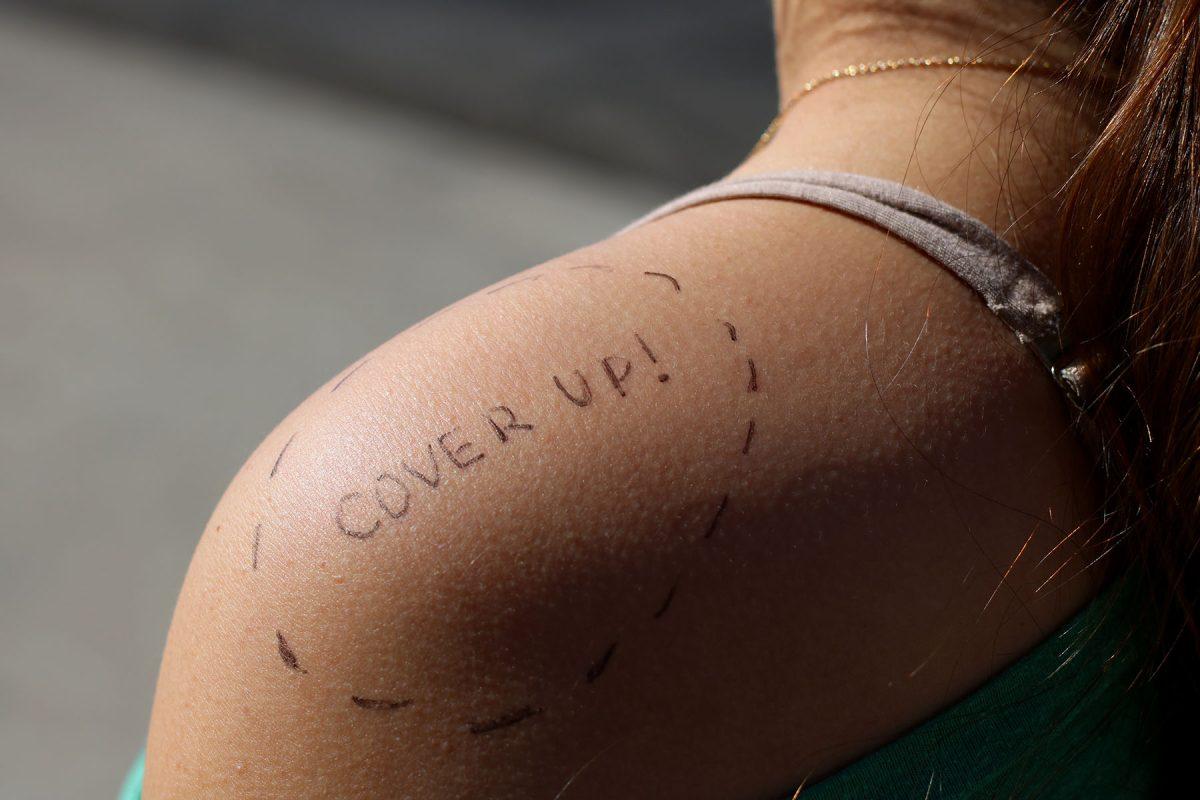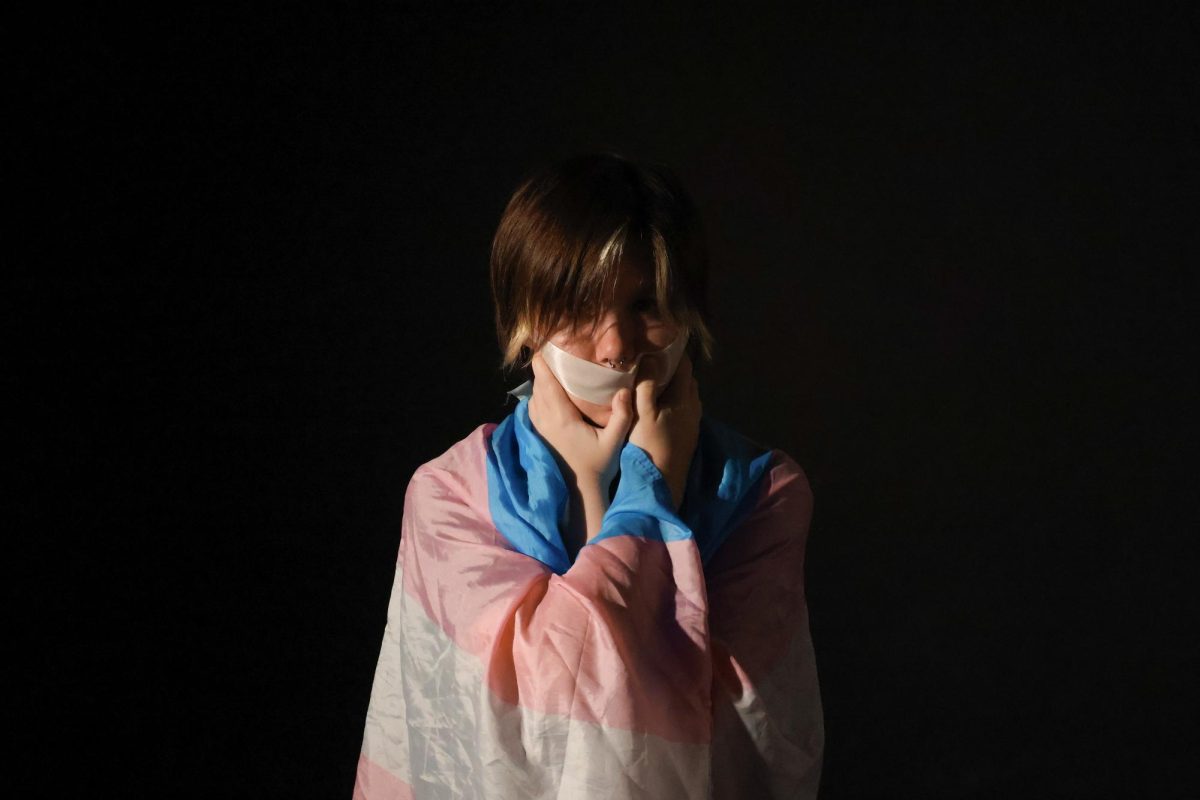Current dress codes insinuate sexualization of female students
[dropcap size=small]F[/dropcap]emale students have made a long standing argument against the dress code due to its bias against female dress. Males face restrictions of hats, inappropriate text or graphics on their shirts, and sagging; but female clothing is prohibited of a much less offensive sort — tank tops, shorts, and dresses. These rules set an unfair standard, and they insinuate a sexual objectification of female body parts, such as shoulders and backs, that shouldn’t be held against girls who want to wear these items.
Most female students who wear tank tops or shorts are not exposing any thing strictly inappropriate. The problem isn’t what female Bearcats are wearing, but how others are viewing them in those clothes.
“It feels like they just assume people are going to be sexualized if they wear things like [spaghetti straps and shorts], which, in itself, seems to be sexualizing in the first place,” one Bearcat wisely wrote.
The dress code is certainly impacting students and frequently calls their clothing too sexy. From those surveyed, 26 percent of female students had been dress coded at least once, and 49 percent were cited for revealing clothing. According to administration, 62 percent of dress code offenders this year were females. In past years, the percentage of female offenders has ranged from 55 to 65.
Assistant Principal Dan Sharon reported that the top three violations of the dress code were bare midriff, inappropriate content on shirts or other clothing, and inadequate length of shorts.
“The purpose of the dress code is to ensure students are prepared for success in college, career, and community. College recruiters, business employers, and community service organizations value appropriate and professional attire; first impressions are often based on appearance.”
Certain aspects of the dress code do make sense. It is important to dress appropriately for the occasion, such as at a professional job or interview. See-through fabrics and excessive arm holes are revealing in ways that are inappropriate for school. Gang affiliated attire and masks should not be worn at school. However, banning shorts shorter than where a student’s fingertips rest or tank tops with straps thinner than an inch not only implies that female students are sexualized, but that girls are meant to proactively prevent boys from being distracted from their educations.
Students can just as easily get distracted by male dress. Or the weather. Or noise. An assumption has been made that females will be more distracting or less respected than males when wearing skimpier clothing. There’s the assumption too that “boys will be boys,” and that they have no control over themselves, so girls must keep them focused by wearing shirts that cover our shoulders.
But the reality is that most male students can focus on their school work, no matter the clothing around them. This has been proven for months, as female students wearing skimpier clothes slip by teachers and security and cause no noticeable distraction in class.
If girls are expecting to resist their urges and focus during class, boys should be held up to the same standards. As many have stated on social media, girls do not dress for boys. We dress for ourselves, for comfort, and for confidence. For most high school girls, this means wearing shorts or a tank top, not anything that actually explicitly revealing.
However, there is the matter of the letter vs the spirit of the law. By the letter, certain short lengths are prohibited, as well as certain sleeve lengths. By the spirit, it can be interpreted that these guidelines are meant to prevent students from revealing their chest or butt.
On hotter days, many students dress according to the spirit of the law, wearing clothing that isn’t explicitly revealing, but does technically violate the dress code.
By updating the dress code to be more specific as to what it is advocating against, students would be allowed to wear clothing that they already wear, without the fear of being told to change because their clothes contradict the letter of the dress code.
Failed dress code enforcement is very revealing. Students regularly slip through teachers and security in tank tops and shorts without causing disturbance. Why enforce the dress code in that aspect? Class continues. No problems of focus arise. Someone may get just as distracted by looking out the window as by someone else’s outfit; either way, it’s a matter of not focusing on school work rather than on what someone is wearing.
This is not an argument against the dress code as much as an argument against what it insinuates.
Times have changed. We’ve made progress in gaining equality and respect for women, so school rules should reflect it. It is time to drop the “boys will be boys” ideology. It’s time that we adjust the dress code to recognize cultural norms. It’s time to permit females feel comfortable in.
The intention of a dress code is to protect students and maintain respect for students and the school. But how are we supposed to gain respect from rules that disrespect our freedom? How are we supposed to feel protected when the dress code implies that females must protect males’ supposed distractibility? We need to adjust the dress code to prohibit clothes that are explicitly revealing, rather than clothes that have the slight potential to be.







